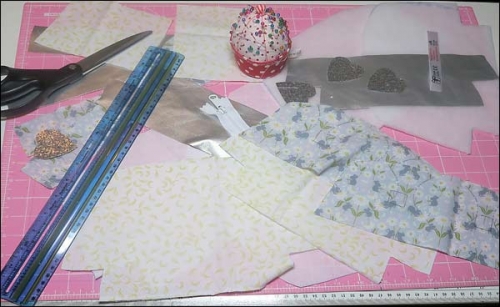Pricing Handmade
Pricing handmade items is an issue that confronts all those who craft handmade goods.
Just about every crafter who has tried to sell their carefully created items at a craft fair has encountered at least one disgruntled member of the public who claims their prices are too high. There are many comments on Facebook pages from handcrafters asking others whether they are charging too much because a potential customer has grumbled they are. The unanimous response from other crafters is that we don’t, on the whole, charge enough.
This potential shopper’s mistake is in equating a handmade item with a basic, economical item. Many shoppers when looking at hand made items only value the cost of the materials used. But what about all the skilled hours of the maker’s time?
Handmade gifts are luxury goods. Nobody actually needs such items in order to survive.
Even if the item were essential to everyday living there would be cheaper, mass-produced versions available that would do the job.
A handcrafted gift has been painstakingly and individually made usually using quality materials as no crafter wants to spend hours creating something of inferior quality.
Oscar Wilde, speaking as Lord Darlington in Lady Windermere’s Fan said that a cynic was:
“…a man who knows the price of everything and the value of nothing.”
As with so much of what Wilde wrote or said, it’s more than just a nice turn of phrase – it hits at the heart of the problems of society.
There are far more steps involved in creating a handmade item than simply making it. As an example, consider the processes typically involved in making a toy handbag…
When I prepared to make a child’s bag today I assembled all the parts and counted them. There were 25 in all! That’s 25 different pieces to be cut out or assembled and then joined together. The more parts there are, the more time the item takes to make. Time is money. Time is a large factor to be taken into account when pricing handmade gifts.
Step One – Making the item
- Buy fabric, lining, interfacings, threads etc
- Pre-wash and iron fabrics
- Cut out fabric pieces, lining pieces, interfacings of various kinds
- Attach interfacings to fabric pieces
- Sew all the parts together, pressing as you go
- Personalise item by embroidering name
- Add named part and finish putting bag together
But it doesn’t end there…

Parts of toy handbag
Step Two – Marketing it
- Photograph finished bag – edit photo
- Put details of item online in shop – write description
- Promote item on social media
- Maybe take item to a craft fair to sell
- Package item
- Enter details of item in accounts
- Do this for each and every item created
Step Three – Doing it Legally
And when that item is a toy there are still further costs…
Many people are unaware that CE marking regulations apply to handmade toys that are sold in the UK just as they apply to mass produced toys made in factories.
All toys sold for children under 14 years anywhere within the UK or EU must have been tested according to the regulations. Only if they pass do they qualify for CE marking and may legally be sold as toys.
What does the requirement for CE marking mean for hand-crafted toys?
Firstly only new materials may be used, no recycling.
Testing ensures that toys are safe and appropriate for the age of child for which they are designed.
Each different material used in the construction of a toy must have been certified as safe from chemicals under EN71-3 rules.
Although it is possible for the crafter to conduct the necessary physical (EN71-1) and flammability (EN71-2) tests on their handmade toys, the chemical testing can only be carried out by a registered laboratory. This entails cost.
Whereas the cost of CE marking becomes negligible for a large scale producer making and selling thousands of the same toy, for a small scale hand maker it forms a significant part of the cost of each one.
Many bags sold for children are classified as fashion accessories and as such don’t need CE marking but this exception only applies if the item has no play value. If it has play value it is classed as a toy and must have passed testing.
Read a leaflet about CE marking for toys here. (The UKCA mark will be used in the UK from 2021)
Pricing Handmade items on Ooak Gifts
All of the above can take hours for each item created but to charge a realistic hourly rate on top of the costs of materials and overheads scares the majority of crafters into believing nobody will be prepared to pay the true cost. Too many crafters are working for nothing! This only creates a greater problem in that because many items are sold too cheaply many buyers expect to pay low prices and complain when more is asked… and so the problem is perpetuated.
I am charging realistic prices for the items I make. This includes factoring in not only the basic materials but also payment for the hours spent putting them together as well as a percentage of other costs such as testing, marketing, insurances, etc. etc.
I want to sell my items to those who know and appreciate them fully for what they are.
In return for this I go the extra mile to make each item as well as I can with care and love.
A personalised, handmade item is a very special luxury gift – made with care to be given with love and treasured when received.
